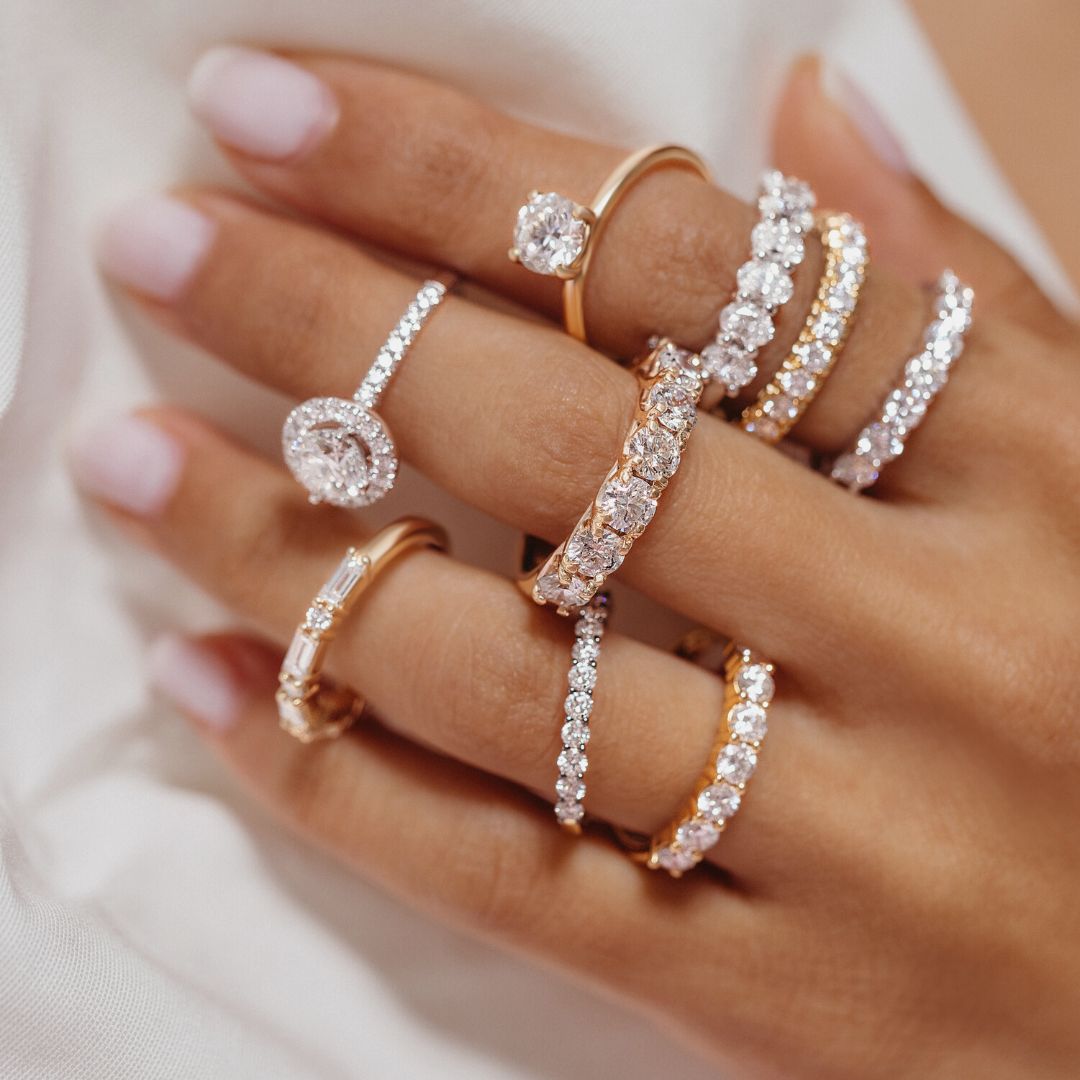
Lab-Grown Diamonds are not Lab Diamond Simulants.
Lab-Grown Diamonds are not simulants. You may be confused about what is the difference between a diamond simulant and lab-grown diamonds. Despite what might be stated - diamond simulants and lab-created diamonds are not the same. To help you better understand, we’ve created a- helpful guide to understanding the difference between lab grown diamonds and diamond simulants.
Firstly, let’s start with defining what exactly a diamond and a simulant diamond is:
What Are Diamonds?
A natural/earth mined diamond is formed naturally from high temperatures and pressure beneath the Earth’s crust over billions of years. Diamonds are a precious stone consisting of a clear and colourless crystalline form of pure carbon, the hardest naturally occurring substance.
As diamonds are one of the hardest naturally occurring minerals on Earth, they are highly resistant to surface scratching and breakage. This durability makes a diamond an ideal choice for your engagement ring.
What Are Lab Grown Diamonds?
Lab-grown diamonds are simply man-made diamonds that are grown inside a lab by scientists instead of found occurring naturally in mines. Even though the diamonds are grown in a lab, they have identical chemical, optical, and physical properties as natural diamonds do.
Futurae Diamonds Lab Grown Diamonds are grown from tiny carbon diamond seeds of pre-existing earth diamonds. Using highly sophisticated advanced technology, the natural creation process of an earth diamond formation is replicated in a lab.
Our lab-grown diamonds have the same physical, optical, and chemical properties as natural mined diamonds. Even when using professional equipment, lab-grown diamonds are almost impossible to differentiate from earth/natural diamonds and can only be identified with scientific testing using specialized gemological equipment.
Just like an earth/mined diamond, Lab-grown diamonds rank 10 on the Mohs Scale of Hardness, making them one of Earth's hardest and most durable minerals.
Lab-grown diamonds are graded and certified based on shape, carat, cut, color, and clarity just as an earth/natural diamond. Visit GIA for more info. Lab-grown diamonds are more affordable than natural diamonds of comparable size and quality and are a sustainable choice as there is no new mining.
What Are Simulated Diamonds?
Simulated diamonds, also called cubic zirconia (CZ) or moissanite, imitate the look of a diamond, but they are not real diamonds. These synthetic stones are manufactured to simulate diamonds and are not compositionally or optically equivalent to an earth or lab grown diamond.
Diamond simulants are manufactured stones that look like a diamond. They are not carbon. They are visually and compositionally different from an earth or lab-grown diamond.
Simulants do not have the same chemical or physical properties of an earth or lab-grown diamond, and therefore sell at a much lower price point. Simulants can easily be distinguished from natural or lab-grown diamonds with the naked eye due to their fiery sparkle.
What’s the Difference Between Simulant Diamonds And Diamonds (Earth or Lab)?
Unlike diamond simulants (Cubic Zirconia), lab-grown diamonds have the same physical, chemical, and optical properties as a naturally mined diamond. Lab Grown diamonds are considered real diamonds. In 2018, the USA Federal Trade Commission (FTC) expanded its definition of “diamond” to include those grown in a laboratory, as part of several changes to its jewelry guidelines.
Whereas diamond simulants such as moissanite or cubic zirconia (CZ) are physically, chemically, and optically different from a lab grown diamond.
Another significant difference is a diamond simulant is visually distinguishable from a lab-grown or earth diamond to the naked eye due to their fiery sparkle and rainbow refractions.
Moissanite gemstone ranks 9.25, and cubic zirconia ranks 8.5 on the Mohs Scale of Hardness, making them more susceptible to surface scratching and wear over time.
Diamond simulants such as moissanite are lower in price than both lab and natural diamonds and vary in price only based on size and whether the stone is Premium or Super Premium.
Although moissanites are graded for clarity using the GIA clarity scale, it is important to mention that the Gemological Institute of America does not grade diamond simulants.
Diamond simulants can be differentiated from diamonds due to their optical properties. Moissanite, for example, is double refractive, while a diamond is single refractive. This causes the moissanite to emit a fiery rainbow sparkle that is easily differentiated from a diamond with the naked eye.